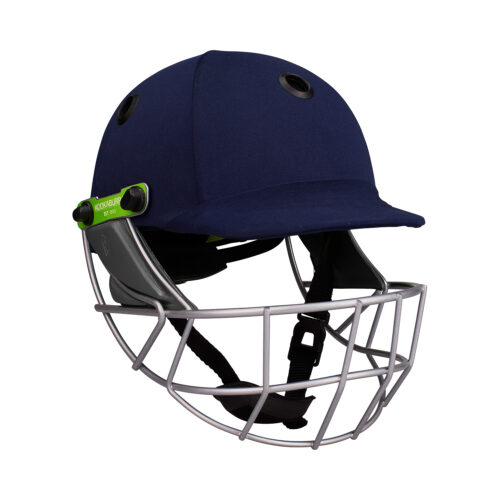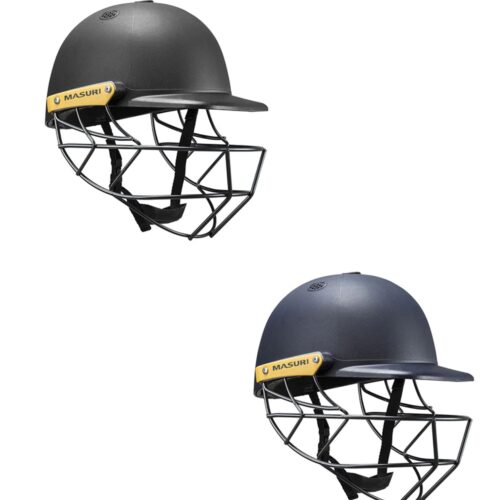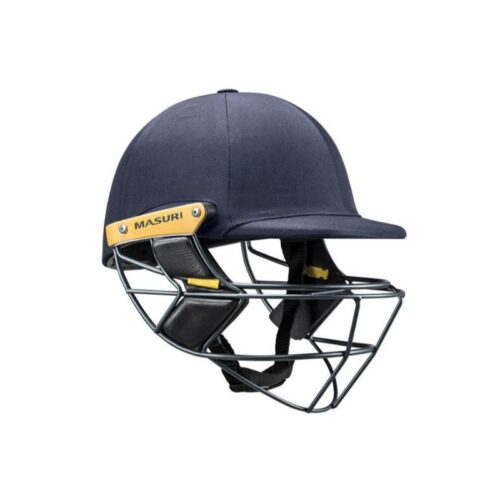It has been compulsory for all junior players under 18 to wear cricket helmets when batting, fielding within 15 yards of the bat and whilst standing up to the stumps as a wicket keeper. With cricket balls travelling in excess of 90 miles an hour at the top end of the game, the risk of head injury is simply too high and a properly fitted cricket helmet is now an essential piece of cricketing equipment.
Features
The shell of a cricket helmet is designed to offer maximum impact protection and shock absorption to the majority of a batsman’s head. The use of a grill in association with a cricket helmet, offers the wearer a large degree of protection whilst aiming to minimise the impact on the wearer’s visibility. The use of a grill rather than a full face cricket helmet is seen as a necessary compromise, with protection being set aside for the sake of reduced weight, improved visibility and better ventilation. The padding within cricket helmets performs two key roles. Firstly it serves as third layer of shock absorption, further minimising the impact of a cricket ball impact. Secondly the padding helps ensure a tight yet comfortable fit, preventing the helmet moving around too much mid-stroke or in response to an impact. A secure, well fitting cricket helmet is a crucial factor in its performance. The chin strap is a key feature in ensuring that your cricket helmet stays securely in place and more importantly that any impacts to the grill, don’t simply push the grill into your face.
Sizing
Selecting a cricket helmet with a good fit is almost important as the materials within. If the cricket helmet’s padding doesn’t fit your head snugly or the chin strap is too loose, the shock may not be effectively absorbed by the helmet. Many cricket helmets feature adjustability in various forms to help ensure the best fit. As with many products, the actual size and fitting of cricket helmets can vary between brands and it is highly unlikely that any guide will ever prove 100% successful. Ideally try and visit us at our Cricket Specialist shop so that you can talk to our expert staff and try on a few helmets to find the best one for you. We have compiled this table based on information from a number of different brands to provide you with an industry average guide to cricket helmet sizes.
| Circumference (cm) | Cricket Helmet Size |
| 51-53 | Small Boys |
| 53-54 | Boys |
| 54-56 | Youths |
| 56-58 | Small Mens |
| 58-60 | Mens |
| 60-62 | Large Mens |
To ensure that your cricket helmet is correctly fitted, follow the points below:
Purchasing decisions
Like most protective products, as you go up through the ranges of cricket helmets and note the increase in price, you’ll be asking So what am I getting for my money. In this case, as you spend more you will see some increase in protection to cope with the higher balls speeds. Shell materials such as ABS plastic being replaced with Fibreglass and then in turn Carbon Fibre. In most cases what you will also see is increased comfort levels. Comfort improvements will include weight reductions such as the introduction of titanium grills over carbon steel. More expensive cricket helmets tend to feature more and better ventilation as well as sweat wicking materials and removable inserts.
Maintenance
Looking after your cricket helmet is crucial in ensuring the quality and protective features are maintained over the long term. Failure to maintain your cricket helmet may result in your cricket helmet failing to protect you. Follow the points below to ensure that your cricket helmet is maintained correctly:
If your cricket helmet does not have a cloth covering, wipe away any dirt or stains using a damp cloth with mild detergent. If your cricket helmet has a cloth cover, wipe the cloth using a small bristled brush and mild detergent.






